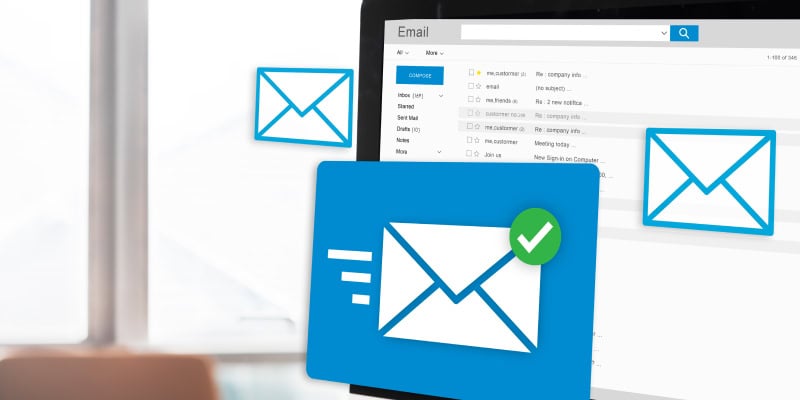While email phishing attempts, i.e., scams, cast wide nets, Business Email Compromise (BEC) represents a highly sophisticated, focused, and targeted form of cybercrime that has become one of the most financially damaging threats globally, affecting organizations across all industries and sizes. Many organizations are turning to cybersecurity consulting services to understand and combat these BEC attacks. This guide dives deep into these sophisticated email threats, detailing how they work, their various types, and effective strategies to help businesses protect themselves against these evolving schemes.
What is Business Email Compromise?
BEC is a cybercrime technique where attackers use social engineering tactics or hacking methods to initiate unauthorized wire transfers. These attacks use fraudulent emails to manipulate employees, with criminals crafting and sending compelling but fraudulent business emails impersonating executives or financial personnel. By exploiting trust and authority, these criminals target human vulnerabilities and deceive them into transferring funds to fraudulent accounts, sharing data, or revealing sensitive information.
Anatomy of a BEC Attack
A typical BEC attack comprises a series of calculated steps:
1. Information gathering: Attackers begin by studying publicly available company information, including organizational structures, staff roles, and business relationships.
2. Setting up the deception: Criminals may gain access to employees’ email credentials or set up lookalike email domains through phishing emails or fake login pages.
3. Attack execution:
- Impersonation/spoofing: Attackers employ email spoofing, a common method used in BEC attacks, where they send emails to mimic trusted domains/sources like company executives, clients, or attorneys. They also use phishing and malware to gain ongoing access to the company’s internal communications by acquiring employee login credentials.
- Requesting urgent action: Emails often convey an urgent tone, asking for sensitive information, immediate payments, or wire transfers.
Who Are Most Vulnerable to BEC Attacks?
Several departments face heightened risk, including:
- Finance teams handling transactions—the primary target.
- Human resources departments managing employee data and sensitive records.
- Executive teams who hold authority, making impactful impersonation.
- IT staff managing email security and account access.
BEC Attack Variants
Business email compromise attacks come in various forms, each exploiting specific vulnerabilities within a company’s structure:
- CEO fraud: Attackers pose as high-level executives, such as the CEO or CFO. They send urgent emails to employees requesting immediate fund transfers, often in finance or accounts payable.
- Account compromise: Criminals compromise employees’ legitimate email accounts and use this to request payments or sensitive information from clients or employees within the company, posing as a trusted colleague.
- False invoicing: Attackers send convincing and genuine fake invoices, often impersonating vendors or business partners, with company branding and payment details to trick finance teams into sending money.
- Legal representative impersonation: Criminals masquerade as attorneys during critical financial events, using legal pressure, i.e., creating a sense of urgency by pointing out the legal consequences, to ensure compliance.
- Data theft schemes: Some BEC attacks focus on stealing sensitive HR information like tax IDs or payroll data rather than money to use later for future attacks or identity theft.
Warning Signs of BEC Attacks
Identifying the warning signs of a BEC attack enables employees to act quickly and minimize potential harm. Look out for these red flags:
- Unexpected requests from executives: Emails from a company executive asking for urgent or substantial financial transactions, especially if such requests are outside their typical scope and responsibilities.
- High-pressure tactics demanding quick action: BEC emails often create a sense of urgency, pushing the recipient to act swiftly, i.e., complete a task, to prevent a perceived negative consequence.
- Suspicious attachments or links in emails: Be cautious of unexpected emails with attachments or links, particularly if they come from unknown, unfamiliar, or high-ranking sources.
Recognizing the difference between genuine and fraudulent emails is crucial in preventing BEC attacks.
Also Read: Email Compliance Essentials: A Guide for Small Businesses
Prevention Strategies for BEC Security
BEC does not have to be an unavoidable threat to your organization. Implementing BEC security measures can minimize the risk of employees encountering spoofed emails while enhancing their ability to identify and address suspicious messages effectively.
The measures include:
1. Educating employees: Conduct regular training sessions to boost your organization’s resilience against BEC and phishing attacks.
Employees should be trained to:
- Identify email red flags, such as typos, unfamiliar links, and urgent money transfer requests.
- Verify requests for sensitive information or transactions by directly approaching the sender.
2. Strengthening authentication: Many organizations still rely on outdated email protocols like Internet Message Access Protocol (IMAP) and Post Office Protocol version 3 (POP3), which lack support for modern authentication technologies. Replace basic email protocols with Multi-Factor Authentication (MFA) to enhance security.
3. Implementing email authentication protocols: Deploy protocols such as Sender Policy Framework (SPF), Domain-based Message Authentication, Reporting, and Conformance (DMARC), and DomainKeys Identified Mail (DKIM) to prevent domain spoofing. These protocols authenticate the email sender’s domain, reducing the likelihood of fraudulent emails reaching employees.
4. Securing payment systems: Surprisingly, many businesses still send invoices, follow-ups, payment confirmations, and other billing communications via standard email, which increases the risk. Employ modern, secure billing systems that offer advanced tools specifically designed to safeguard payment-related correspondence.
5. Maintaining updated security: Keep all security software, operating systems, and applications updated to minimize exploitable vulnerabilities. Implement automated updates to simplify this process, ensuring your software remains current and secure.
Detecting BEC Incidents
Once attackers start sending emails, specific actions often deviate and set them apart from legitimate email users. Security systems should be configured to flag these activities:
- Inbox rules that:
- Automatically forward emails to hidden folders.
- Automatically delete certain messages.
- Redirects messages to an external email address.
- Contain BEC keywords, such as “Urgent/Immediate action,” “Verify your account,” or “Private request.”
- Addition of new mailbox delegates.
- New mailbox forwarding to an external address.
- Successful rapid mailbox logins following failed attempts.
- Logins originating from proxy or VPN services.
Secure Your Business Against BEC Attacks
Protecting your business communications from BEC has become crucial in today’s digital world. As an IT consulting company, we at CMIT Solutions of Tempe and Chandler specialize in helping organizations defend against these sophisticated attacks that combine thorough research, social engineering, and advanced technologies like AI. While BEC poses a serious financial threat to organizations of all sizes, our multi-layered defense approach helps you stay protected as these tactics evolve. Contact us to secure your business from BEC attacks.
Our IT Services
| Managed IT Services | Cybersecurity | Productivity Applications |
| IT Support | Cloud Services | Network Management |
| Compliance | Data Backup | Unified Communications |
| IT Guidance | IT Procurement |



